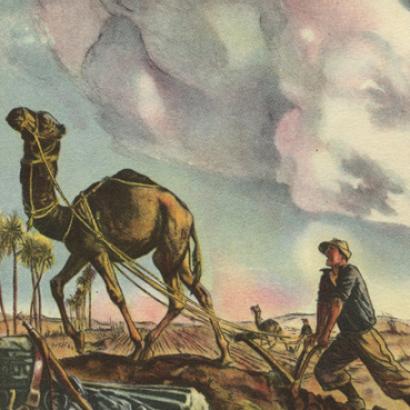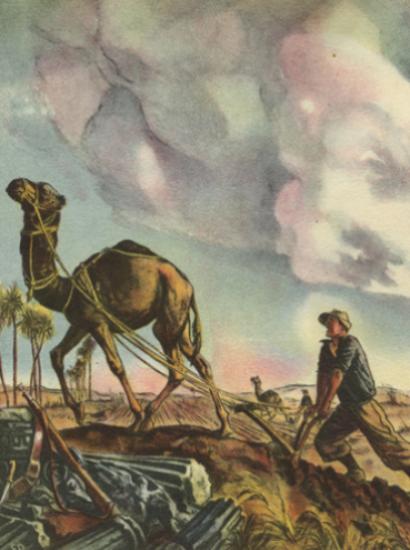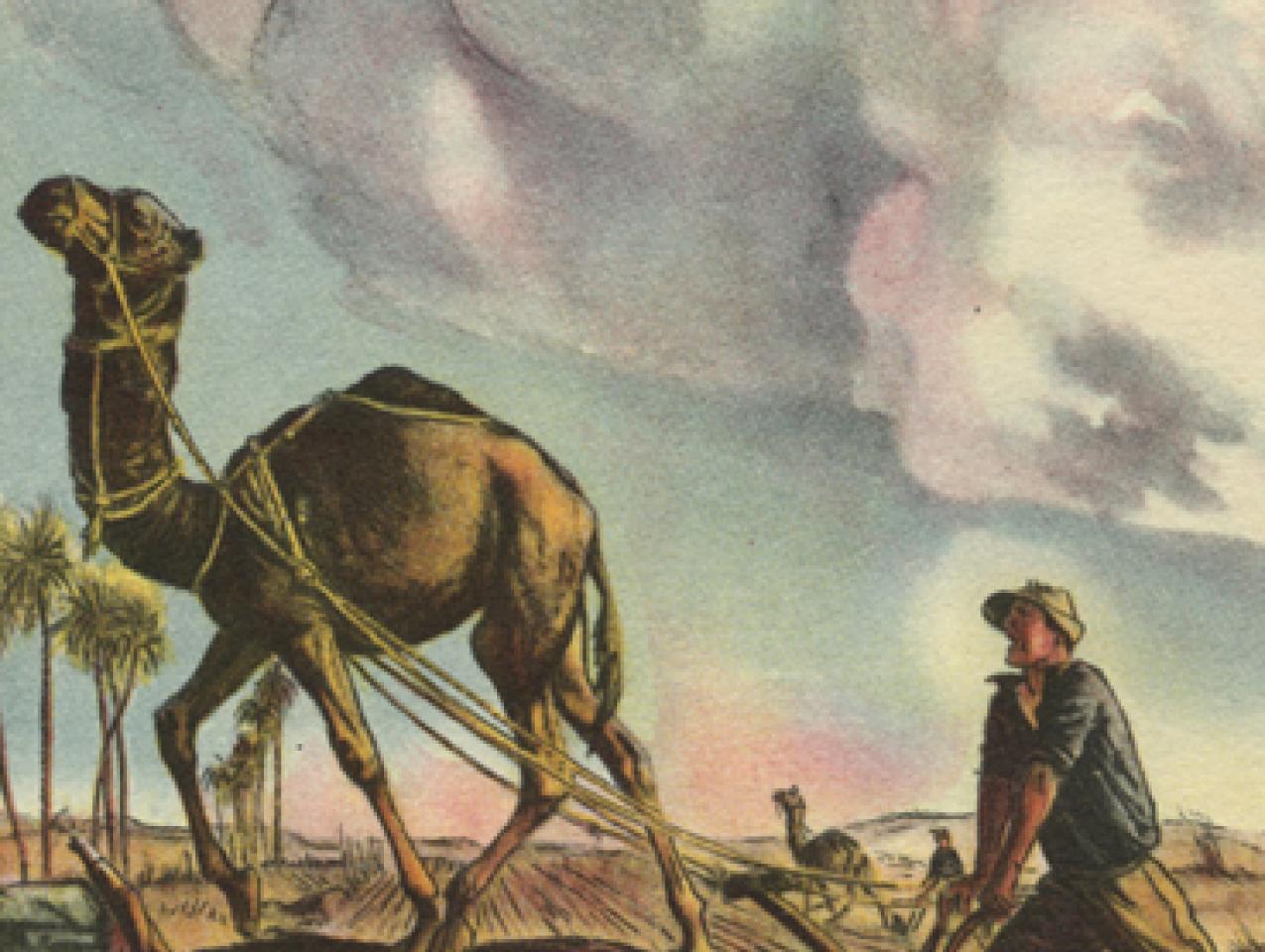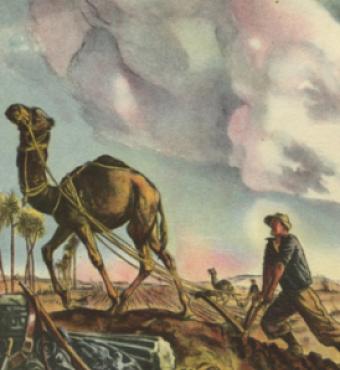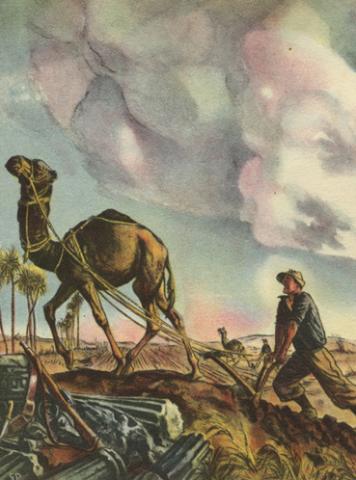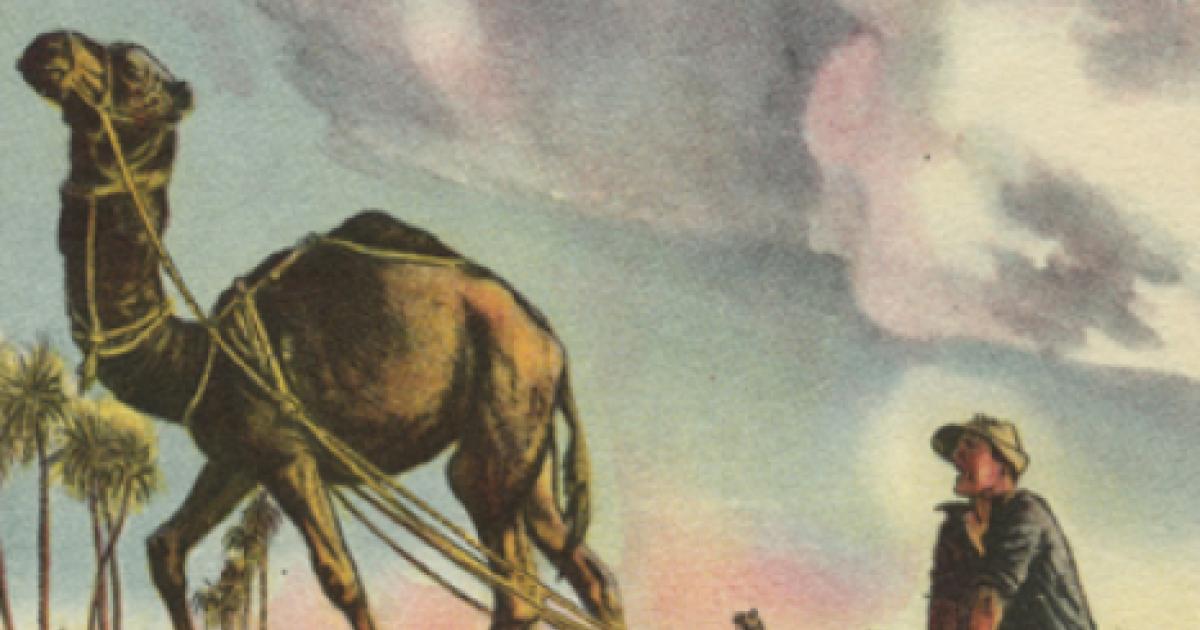
The Hoover Institution Archives recently acquired several dozen vintage postcards depicting battle scenes, regimental colors, and other illustrations of military life related to the Italian colonization of the region that later became known as Libya, beginning in the aftermath of World War I and continuing until Italian forces were driven out of North Africa by the Allies during World War II. Produced between 1915 and 1943, these postcards sought to glorify the exploits of the Italian military in the region, and mobilize the Italian public to support those campaigns. With the current conflict in Libya dominating the news headlines, these postcards remind us of previous wars in which rebels in the east of that country, seeking to win their freedom, targeted authoritarian rulers in Tripoli.
The involvement of the modern Italian state in this region stretches back to the Italo-Turkish War of 1911–12, in which Italian forces defeated the Ottoman Turks and established protectorates in the coastal regions of Tripolitania and Cyrenaica. With the outbreak of World War I, the Turkish forces recaptured much of that territory, although they were eventually forced to cede it at the war’s end. Anticolonial forces—whose leaders were based in Cyrenaica, in and around Benghazi—continued during the following decade to wage a guerrilla war against the Italian forces, which lasted until a brutal campaign, led by Generals Pietro Badoglio and Rodolfo Graziani, crushed the movement, ending with the execution of the insurgent leader, Omar Mukhtar, in 1931.
In 1934, the fascist government of Italy unified the provinces of Tripolitania, Cyrenaica, and Fezzan into a new colony,“Libya,” the name given to the region by the Roman emperor Diocletian more than fifteen hundred years earlier. Using that name was meant to evoke this past history and underscore the fascist emphasis on re-creating the Roman Empire around the shores of the Mediterranean, with Libya as the “Fourth Shore” of Italy. Mussolini’s regime thus initiated a ramped-up program of colonizing Libya with Italians. In addition to mass transports of settlers from Italy, he also began constructing highways, railroads, ports, and other improvements to the infrastructure to advance Italian settlement and commerce in the region. In addition, the Italians recruited Arabs, Berbers, and other natives of Libya to the colonial battalions of the Italian Army, which went on to play a significant role in the Italian invasion of British-held Egypt in 1940 and in the subsequent desert warfare between the Axis and Allied forces that led to the eventual defeat of the Italian forces and their wholesale retreat from Libya in 1943.
The newly acquired postcards in the Hoover archival collections depict the variety of motifs the Italians used in their colonial propaganda during these years and complement another collection of more than sixty-five postcards depicting Italian military actions during the war in Ethiopia and Eritrea in the mid 1930s. Some postcards depict specific battalions and regiments, recalling significant battles in places that are the scenes of conflict in the present-day crisis in Libya, including Misurata and Benghazi. Other cards extol the deeds of the colonial troops, showing dark-skinned Libyans leading their forces into battle. Yet other postcards portray Italian efforts to place their imprint on the region, evoking the Roman colonization of the area nearly two thousand years earlier. All of these postcards are available in the African pictorial collection.
Source for historical note: Helen Chapin Metz, Libya: A Country Study (Washington, DC: Library of Congress, 1989).




